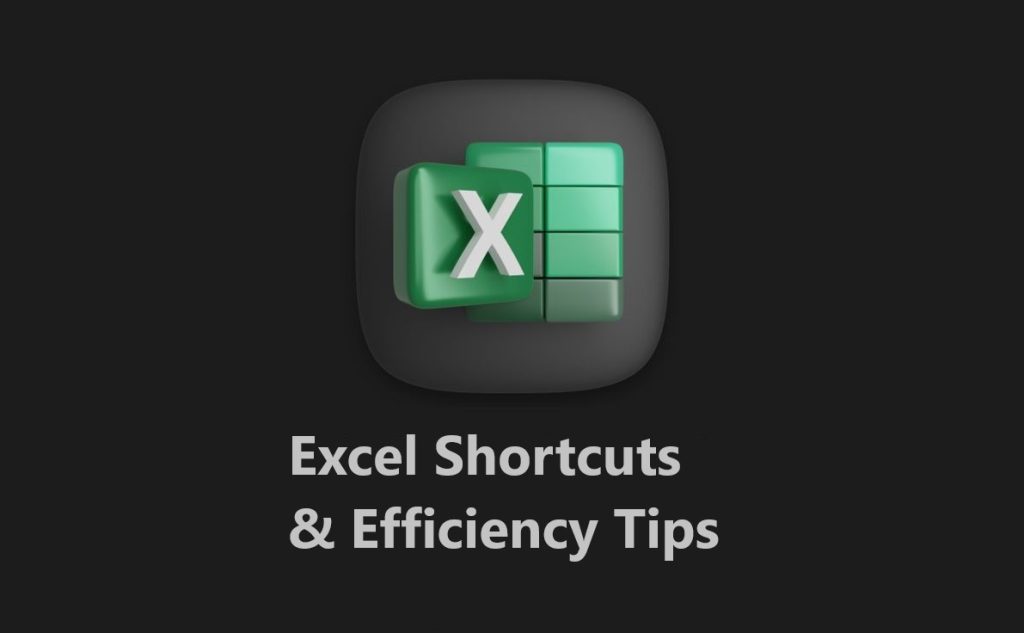Excel Shortcuts and Efficiency Tips are essential tools for professionals looking to optimize their workflow and improve productivity. Excel remains one of the most widely used applications in business, and mastering its shortcuts can save users significant time. Whether you’re managing data, creating reports, or performing complex calculations, using Excel shortcuts can make these tasks more efficient and less tedious.
The Power of Excel Shortcuts
Excel Shortcuts and Efficiency Tips enable users to navigate and manipulate spreadsheets faster and more precisely. Many professionals spend a significant part of their day in Excel, and shortcuts can drastically reduce the time needed for routine tasks. For instance, using Ctrl + C to copy and Ctrl + V to paste is common knowledge, but advanced shortcuts like Ctrl + Shift + L to toggle filters can greatly enhance productivity.
One compelling reason to learn Excel shortcuts is the improvement in workflow efficiency. Shortcuts reduce reliance on the mouse and minimize the steps required to complete a task, allowing users to focus more on data analysis and decision-making. This efficiency is especially crucial in fast-paced environments where time is critical. Consistently using shortcuts can also reduce the risk of repetitive strain injuries caused by prolonged mouse use.
Moreover, Excel shortcuts are designed to streamline processes. For example, the F4 key repeats the last action, saving time when applying formatting or performing repetitive tasks. The Alt + = shortcut instantly sums a column of numbers, eliminating the need to manually enter the SUM function. These shortcuts are convenient and help reduce errors, which is essential when working with large datasets.
Essential Excel Shortcuts for Every User
To truly benefit from Excel Shortcuts and Efficiency Tips, it’s essential to familiarize yourself with a few key commands. One of the most useful shortcuts is Ctrl + Arrow Key, which quickly navigates to the edge of data regions in a spreadsheet. This shortcut is invaluable when working with large datasets, as it allows you to move around quickly without scrolling.
Another important shortcut is Ctrl + Shift + +, which inserts new rows or columns with ease. This is particularly useful during data entry or when restructuring spreadsheets. Similarly, using Ctrl + – can delete rows or columns instantly, speeding up tasks that involve modifying the layout of your data.
The Ctrl + T shortcut is another efficiency booster. It converts a range of data into a table, enabling easier data management and analysis. Tables offer built-in filtering, sorting, and formatting options, making your data more accessible and easier to work with. Additionally, using the F2 key to edit cells directly is a simple yet effective way to speed up data entry.
Excel’s Find and Replace feature, accessible with Ctrl + H, is an excellent tool for making quick changes across large datasets. This feature allows you to search for specific values and replace them with new ones, saving you the time it would take to manually locate and update each instance. When used correctly, this shortcut can help maintain data consistency and accuracy across your spreadsheets.
Efficiency Tips for Advanced Users
For those comfortable with basic shortcuts, advanced Excel Shortcuts and Efficiency Tips can further boost productivity. Combining keyboard shortcuts with Excel’s Ribbon commands opens up many possibilities. Pressing Alt reveals the Ribbon’s key tips, allowing you to access almost any command using just your keyboard.
Another advanced tip involves utilizing Excel’s Quick Access Toolbar (QAT). Customizing the QAT with frequently used commands lets you access these functions with a single click or quick shortcut. This customization saves time and reduces the cognitive load of remembering multiple shortcuts.
PivotTables are another area where efficiency tips make a significant impact. Mastering PivotTable shortcuts, like Alt + N + V to insert a new PivotTable or Alt + J + T to navigate PivotTable tools, streamlines data analysis and reporting. Using slicers with PivotTables also allows for quick data filtering and more dynamic reports.
Macros are valuable for users who frequently perform repetitive tasks in Excel. Recording a macro automates a series of actions, reducing complex processes to a single keystroke. This is especially useful for tasks that require multiple steps, such as formatting data or generating reports. When combined with Excel’s built-in shortcuts, macros significantly enhance efficiency.
The Impact of Shortcuts on Workflow Efficiency
Excel Shortcuts and Efficiency Tips are more than just convenient tools; they are essential for enhancing workflow efficiency. A study by Microsoft found that users who utilize keyboard shortcuts are significantly more productive than those who rely solely on mouse navigation. The cumulative time saved by using shortcuts can add up to hours each week, freeing up time for more critical tasks.
The use of shortcuts also contributes to a more focused work environment. By minimizing the interruptions caused by switching between the mouse and keyboard, users can maintain their concentration and complete tasks more quickly. This increased focus is particularly beneficial in data-driven roles where attention to detail is paramount.
Additionally, mastering Excel shortcuts can lead to improved job performance. Employers value efficiency and accuracy, and being proficient in Excel shortcuts can set you apart as a highly skilled professional. Whether you’re preparing reports, analyzing data, or managing projects, the ability to work quickly and accurately is a valuable asset.
Conclusion
Excel Shortcuts and Efficiency Tips are powerful tools that can transform the way you work with spreadsheets. By learning and applying these shortcuts, you can significantly improve your productivity, reduce the risk of errors, and streamline your workflow. As you continue to refine your Excel skills, these shortcuts will become second nature, allowing you to focus on what truly matters—analyzing data and making informed decisions.


